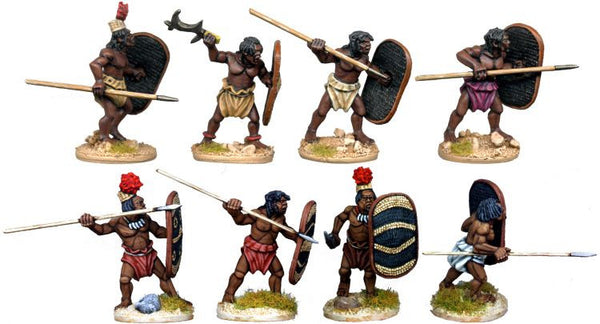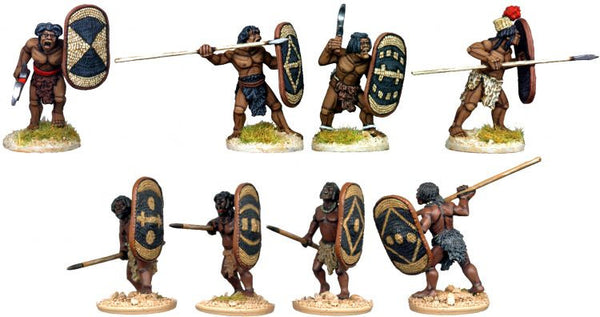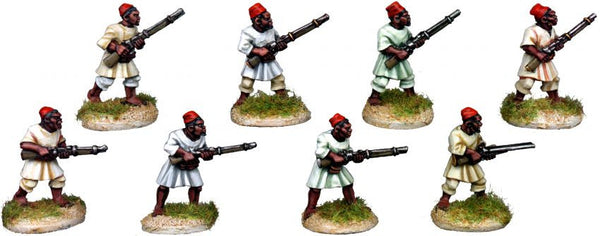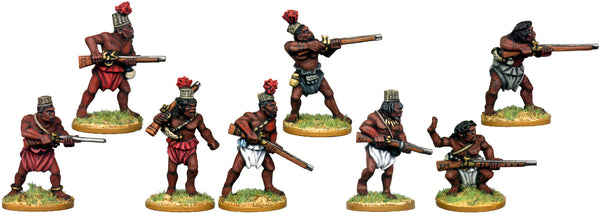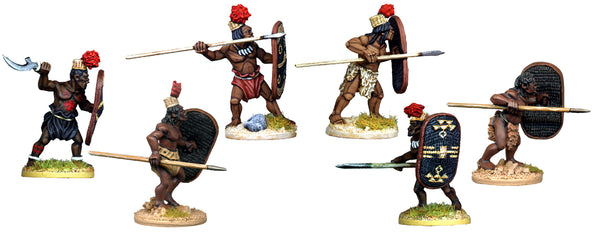Darkest Africa: Azande
The Azande (aka the Zande or Niam-Niam) were a confederation of tribes with a common ruling class. Sometimes called the "Zulus of the Congo", they were famous warriors, armed with spears and many pronged throwing knives, wearing red-feathered basketwork caps and carrying large black shields with geometric designs. Originally fighting in a typically ritualised manner they later developed aggressive tactics based on a combination of musketmen (in the first rank) backed by spearmen and archers. They often clashed with the Belgians, although they allied with them in a successful campaign against the Mahdists. They were particularly hostile to the Sudanese Slavers of the 1870s, who raided Northern Azandeland from Kordofan, and their Mahdist successors, who did much the same. One Azande sultan, Zemio, even planned to send an army to Khartoum to save Gordon.
Many of the warrior tribes of the Congo had a very similar appearance (and the Azande themselves were not uniformly dressed or equipped) so these models could easily be used to represent other tribes, like the Tetela. With large wooden shields they could also be warriors of the Mangbettu confederation of the NE Congo.
The variety of hair, loincloth and headdress types in the Azande packs gives you interesting mixed units or 3 different clan/village styles - traditional braided hair with loincloths, braided hair with barkcloth "nappies" or cropped hair with raffia caps. For the most "progressive" chiefs there will also be uniformed bodyguards in imitation of Sudanese bazingers and Egyptian troops. Pack DA085 make particularly good allied archers.
Loincloths: Barkcloth either in its natural red-brown colour or dyed black or white. Their Mangbettu neighbours sometimes dyed theirs in wide, vertical stripes of black and white - possibly the Azande copied this fashion. Older style loincloths were fur - leopard, genet (straw coloured with black spots), antelope or colobus monkey (black and white).
Headdress: Raffia caps in a natural colour with fine,contrasting bands or geometric patterns in red and black. The feathers attached to the front of the caps were normally red, with chieftains wearing additional bunches of eagle feathers (white with dark brown tips) at the back.
Arab Dress: some chiefs and their bodyguard units of riflemen adopted Sudanese/Egyptian influenced clothing - white jibbehs or similar shirts, sometimes white trousers and red or white fezzes.
Warpaint: black and red spots and stripes, possibly blackened foreheads.
Shields: black with geometric patterns left in the natural basketwork colour or painted white.


